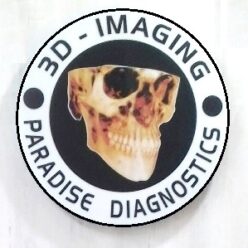Cone Beam Computed Tomography (CBCT) and traditional medical Computed Tomography (CT) scanning share the fundamental principle of utilizing X-rays to create cross-sectional images of the body. However, there are several key differences between the two imaging techniques:
Beam Shape:
CBCT: Utilizes a cone-shaped X-ray beam. This cone shape allows for a larger area to be covered in a single rotation, providing a more focused and efficient scan of a specific region.
Traditional CT: Uses a fan-shaped X-ray beam. The fan shape is suitable for imaging larger areas of the body and is often used for comprehensive scans.
Field of View (FOV):
CBCT: Typically has a smaller field of view, focusing on specific regions of interest such as the oral and maxillofacial area.
Traditional CT: Can have a larger field of view, making it suitable for imaging larger anatomical regions or the entire body.
Radiation Dose:
CBCT: Generally exposes patients to a lower radiation dose compared to traditional CT. This is because CBCT is designed for more localized imaging, and the cone-shaped beam is tailored to the specific area of interest.
Traditional CT: Involves a higher radiation dose, which may be necessary for imaging larger portions of the body.
Applications:
CBCT: Primarily used in dental and maxillofacial imaging. It is well-suited for applications such as dental implant planning, orthodontic assessment, and temporomandibular joint (TMJ) evaluation.
Traditional CT: Applied to a wide range of medical fields and is used for imaging various parts of the body, including the head, chest, abdomen, and pelvis.
Spatial Resolution:
CBCT: Often provides high spatial resolution, allowing for detailed imaging of smaller structures, such as teeth and bones in the oral and maxillofacial region.
Traditional CT: While offering excellent spatial resolution, it may not be as optimized for the fine details of specific structures in the oral and dental anatomy.
In summary, CBCT and traditional CT are both valuable imaging modalities, each with its own set of advantages and applications. CBCT is more focused on localized imaging, particularly in dentistry, while traditional CT is more versatile and suitable for imaging larger anatomical regions throughout the body.
